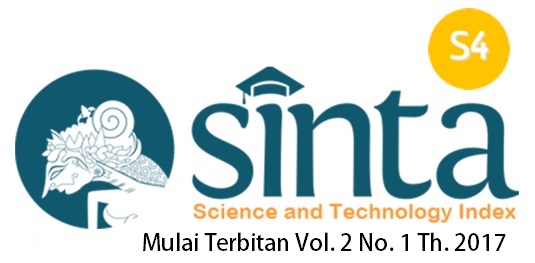An Approach to Handling Spatio-Temporal Contexts on Linked Open Data for Points of Interest
Abstract
Keywords
Full Text:
PDFReferences
B. Balk, H. J. d, andW. Diewert, “Handbook on residential property price indices (rppis)”, World Bank Group, 2013. [2] C. Dillon, Landed: The Guide to Buying Property in Japan. Dillon Communications Ltd, 2010. [3] F. Antunes, M. Freire, and J. P. Costa, “Semantic web tools and decisionmaking”, in Joint International Conference on Group Decision and Negotiation, 2014, pp. 270–277. [4] T. Berners-Lee, J. Hendler, and O. Lassila, “The semantic web”, Scientific american, vol. 284, no. 5, pp. 34–43, 2001. [5] J. Hendler, J. Holm, C. Musialek, and G. Thomas, “Us government linked open data: Semantic. data. gov”, IEEE Intelligent Systems, vol. 27, no. 3, pp. 25–31, 2012. [6] F. Bauer and M. Kaltenböck, “Linked open data: The essentials”, Edition mono/monochrome, Vienna, 2011. [7] N. F. Noy, M. Crubézy, R.W. Fergerson, H. Knublauch, S.W. Tu, J. Vendetti, and M. A. Musen, “Protégé-2000: An open-source ontology-development and knowledge-acquisition environment.”, in AMIA Annual Symposium proceedings. AMIA Symposium, vol. 2003, 2003, pp. 953–953. [8] N. F. Noy, M. Sintek, S. Decker, M. Crubézy, R. W. Fergerson, and M. A. Musen, “Creating semantic web contents with protege-2000”, IEEE intelligent systems, vol. 16, no. 2, pp. 60–71, 2001. [9] M. A. Musen, “The protégé project: A look back and a look forward”, AI Matters, vol. 1, no. 4, pp. 4–12, 2015, ISSN: 2372-3483. DOI: 10.1145/2757001.2757003. [Online]. Available: http://doi.acm.org/10.1145/ 2757001.2757003. [10] B. DuCharme, Learning SPARQL: querying and updating with SPARQL 1.1. O’Reilly Media, Inc., 2013. [11] O. Curé and G. Blin, RDF database systems: triples storage and SPARQL query processing. Morgan Kaufmann, 2014. [12] N. Firdaus, T. Adachi, and N. Fukuta, 2018, July. Towards Handling Spatio-Temporal Contexts on Linked Open Data for Points of Interest. In 2018 7th International Congress on Advanced Applied Informatics (IIAI-AAI) (pp. 570-575). IEEE. [13] B. McBride, “Jena: Implementing the rdf model and syntax specification”, in Proceedings of the Second International Conference on Semantic Web, CEUR-WS.org, vol. 40, 2001, pp. 23–28. [14] E. Prud’hommeaux and C. B. Aranda, “SPARQL 1.1 federated query”, W3C, W3CRecommendation, Mar. 2013, http://www.w3.org/TR/2013-/REC-sparql11-federated-query-20130321/. [15] S. Auer, J. Lehmann, and S. Hellmann, “Linkedgeodata: Adding a spatial dimension to the web of data”, in International Semantic Web Conference, Springer, 2009, pp. 731–746. [16] C. Bizer, R. Cyganiak, and T. Gauß, “The rdf book mashup: From web APIs to a web of data”, in Proceedings, vol. 1, 2007 [17] B. Schoenmakers, “Designing linked data applications”, Master’s thesis, Delft University of Technology, 2010. [18] M. of Land, Infrastructure, Transport & Tourism, Urban land use planning system in japan. [Online]. Available: http://www.mlit.go.jp/common/001050453.pdf
Refbacks
- There are currently no refbacks.






